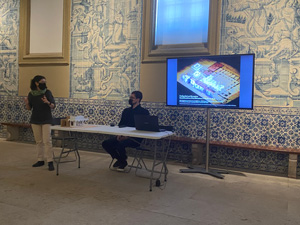Members of the Joint Programming Initiative on Cultural Heritage and Global Change met in Lisbon

The Executive Committee and the Board of Directors of the Joint Programming Initiative on Cultural Heritage and Global Change ( JPI CH) met in Lisbon on November 18th and 19th. The aim of the meeting was to share the results of the work carried out throughout 2021 and to discuss future actions in the field of supporting research in the area of cultural heritage, namely the implementation of the next Calls for joint transnational projects, one of which in partnership with JPI Climate, as well as dissemination activities under the French Presidency of the Council of the European Union.
JPI CH, created in 2010 on the basis of an instrument launched by the European Commission, is an Initiative driven by the member states, bringing together national research funding organizations, ministries and research councils in Europe to tackle the societal challenges of the European Research Area.
The meeting took place in a hybrid format, with the face-to-face part taking place on the premises of the Foundation for Science and Technology (FCT) and the Azulejo Museum. It was attended in person by 18 JPI representatives, including its President, Pascal Liévaux, and one of its Vice-Presidents, Charles Giry-Deloison.
Portugal has been a member of JPI CH since 2014. National representation has been provided by the FCT, which now has the Directorate-General for Cultural Heritage as a partner, a body that has participated in the organization's work for the first time.
This meeting in Lisbon had the support of the National Tile Museum, which hosted the participants on two afternoons to present scientific and technological research projects in the field of tiles, as well as the Museum's own collections. The conservation and dissemination of Portugal's cultural heritage were two of the important aspects addressed. The participants were also surprised by a challenge from the Tile Museum to collaborate in a cultural and recreational activity. The activity, accepted by all with great enthusiasm, consisted of painting a tile and the piece created was taken with them to their countries.